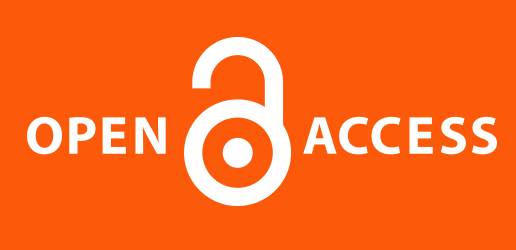
Research on the construction and effectiveness evaluation of the collaborative education model of innovation and entrepreneurship education and student management in colleges and universities
摘要
This study develops an analysis around the path of integration between innovation and entrepreneurship education and student management in universities, aiming to construct a collaborative education model and evaluate its implementation effectiveness. By sorting out the development process of innovation and entrepreneurship education, clarifying the supporting role of student management, and combining the organizational system, curriculum system and practice platform, we propose a multi-dimensional collaborative implementation strategy. On this basis, a system of evaluation indicators was constructed, data were collected using methods such as questionnaires and interviews, and empirical analysis was performed. The results show that the collaborative education model helps to enhance students' innovative and comprehensive qualities, enhance the effectiveness of the integration of educational resources and promote the systematic transformation of education mechanisms in colleges and universities.Introduction
With the continued optimization of the country's economic structure and the comprehensive advancement of its innovation-driven strategy, talent training methods are in urgent need of transformation and upgrading. As an important position for talent export, innovation and entrepreneurship education has gradually become a key part of education reform. Its goal is to stimulate students' awareness of innovation, cultivate entrepreneurial ability, and improve their practical level. At present, despite the progress made in promoting relevant education in colleges and universities, problems such as lagging curriculum content, insufficient practice platforms, and single management mechanisms are common. In particular, the separation between innovation and entrepreneurship education and student management is more obvious, which restricts education. The full release of effectiveness. Therefore, building an integrated education model with a collaborative mechanism as the core, integrating education and management resources, and realizing the linkage of multiple forces has become an important breakthrough for improving the quality of education in colleges and universities.
Current situation and challenges of innovation and entrepreneurship education in universities
The development of innovation and entrepreneurship education in universities
Innovation and entrepreneurship education in colleges and universities in my country started at the end of the 20th century. In the early stages of development, it focused on technical training and business plans, and then gradually expanded to the levels of quality training, interdisciplinary integration and social services [1]. Entering a new era, national policies continue to increase, such as “innovation-driven development strategy” and “mass entrepreneurship, mass innovation”, etc., prompting colleges and universities to actively promote the update of educational content and exploration of practical paths, forming a relatively diversified development pattern.
Current status of implementation of innovation and entrepreneurship education in universities
At present, most universities have set up special institutions to carry out innovation and entrepreneurship education, the curriculum system has gradually improved, and teaching methods have become more diverse, such as project orientation, teamwork, and corporate training. Some universities also set up incubation platforms based on local resources to provide students with a real entrepreneurial environment. However, problems still exist, such as some courses are out of touch with industry needs, teaching forms are just forms, platform resources are insufficiently invested, and a linkage mechanism between education and management has not yet been formed [2].
Key challenges for innovation and entrepreneurship education in universities
The outstanding problem facing universities is that the renewal of concepts lags behind, and innovation and entrepreneurship education is still regarded by some schools as a supplementary content of an “elective” nature. Incomplete system design, broken practical links, and unbalanced resource allocation are common. Education and student management are separated from each other, making it difficult to form a synergy in educational effects [3]. How to build unified education goals and optimize collaborative paths is the core task of promoting the deep integration of innovation and entrepreneurship education.
The role of student management in innovation and entrepreneurship education in universities
Concepts and connotations of student management
Student management is not only behavioral norms and institutional constraints, but also includes multiple functions such as value guidance, psychological counseling, and ability improvement. Modern student management emphasizes differentiation, whole-process, and intelligence. Especially in the context of innovation and entrepreneurship education, it must intervene in the education process with higher adaptability and support to provide students with multiple growth channels [4].
The function and role of student management in innovation and entrepreneurship education in colleges and universities
Student management can empower innovation and entrepreneurship education in terms of institutional guarantees, behavioural guidance and psychological support. Through the establishment of entrepreneurial societies, the organization of project competitions and the coordination of resource allocation, students' participation in entrepreneurial activities is enhanced; at the same time, ideological and political education is used to guide students to form a scientific, rational, steady and pragmatic view of entrepreneurship; at the psychological level, the tutoring mechanism is used to help students cope with the uncertainties and frustrations in the entrepreneurial process and improve their psychological endurance and adaptability.
Integration needs of student management and innovation and entrepreneurship education
With the deepening of educational practice, the necessity of connecting student management with innovation and entrepreneurship education has become more and more obvious. The core of management work should not stop at transaction processing, but should also achieve value transmission, ability development and behavior shaping through collaboration with teaching. In view of the differences in students' personalities, implementing a dynamic management mechanism of hierarchical classification and linking up with the teaching department to provide full-process support is the only way to achieve the coordinated advancement of “management education” and “education and education” [5]. Colleges and universities should strengthen resource sharing and information linkage between student affairs departments and innovation and entrepreneurship education platforms, and promote co-construction of projects, co-education through processes, and co-evaluation of results, so that students can achieve comprehensive transformation from cognition to action in real entrepreneurial situations.
Collaborative education model of innovation and entrepreneurship education and student management
Theoretical basis of the collaborative education model
The collaborative education model integrates multidisciplinary theories such as pedagogy, management and psychology. In the perspective of pedagogy, the model emphasizes the cooperation of all parties and believes that the educational process should be interactive and shared rather than one-way teaching. In management, the theory of synergy focuses on organizational interaction within the system, which is consistent with the goal through information exchange between the education department, the teaching team and the student management department, forming a resource integration synergy. Psychology, for its part, focuses on individual differences and requires educational support mechanisms to be dynamically adjusted to the development needs of students. In a comprehensive way, the collaborative education model is oriented towards the all-round development of students and injects integration momentum into the education system of colleges and universities through cross-departmental and multi-angle resource integration.
Collaborative mechanism for innovation and entrepreneurship education and student management in universities
Innovation and entrepreneurship education is committed to capacity development, and student management focuses on behavioral guidance. The synergy between the two can make up for the fragmentation of the education system and form a two-way linkage mechanism. The key lies in unifying educational goals and ensuring that education and management value orientation are consistent, such as the common goal of cultivating compound talents with a sense of social responsibility and practical ability. A normalized communication mechanism should be established to jointly carry out activities and build a project platform to assist the educational process through management services. The synergy mechanism also includes process support and dynamic adjustment, such as providing psychological counseling and behavioral norm guidance during students' entrepreneurial process, enhancing their ability to withstand pressure and willingness to continue to invest, and ensuring the stable implementation of educational effects.
Elements of construction and implementation path of collaborative education model
The construction of a collaborative education model should include four elements: goal alignment, content integration, process synergy, and effect evaluation. Unifying the goal of educating people is a prerequisite, and the goal of talent training needs to be extended to the shaping of quality education and social adaptability. In terms of content integration, management content such as mental health and career guidance should be integrated into innovation and entrepreneurship courses, and entrepreneurial projects should be introduced into the student management system to form an educational structure with inter-embedded content. Process synergy requires the establishment of cross-sectoral cooperation mechanisms, regular consultations, sharing of resources, and strengthening of linkage between services and teaching. In terms of the implementation path, we should start from the top-level design, clarify responsibilities, and build institutional guarantees; at the implementation level, we should promote platform co-construction, practice co-education, and management collaboration; at the evaluation level, we should build a scientific indicator system to track the effectiveness of education and ensure continuous optimization of the mechanism. Through scientific organization and steady advancement, colleges and universities can realize the transformation from division of labor management to collaborative education, truly improving the overall effectiveness of education.
Implementation strategies for the collaborative education model
Organization and institutional construction of universities
For universities to promote collaborative education, they need to build a unified and efficient organizational structure, set up cross-departmental coordination mechanisms, and promote the integration and collaboration of innovation and entrepreneurship education and student management resources. It is necessary to "improve relevant systems, establish curriculum recognition, project management and achievement incentive mechanisms related to innovative practices, guide students to carry out integrated innovative practices across majors, and improve organizational guarantee efficiency".
Innovation in the content and methods of education and teaching
Teaching content should break down professional barriers, integrate innovative and entrepreneurial theory and management courses, and build an interdisciplinary comprehensive education system. In terms of teaching methods, problem orientation, case analysis and role simulation should be promoted, and interactive and collaborative training should be strengthened to guide students to develop innovative thinking and problem-solving abilities in practical tasks, and to achieve the dual goals of knowledge transfer and ability development.
Construction of a practice platform for innovation and entrepreneurship
Colleges and universities should create diversified practice platforms, such as laboratories, maker spaces, incubators and school-enterprise training bases, to encourage students to translate their theories into project results. Introducing real project resources through school-enterprise cooperation, so that students can exercise their teamwork and project management skills in actual combat. It is necessary to set up support mechanisms such as innovation and entrepreneurship funds to help transform ideas into products.
Individualisation and dynamic adjustment of student management
Student management needs to be tailored to suit their needs and provide differentiated services for different stages of development and levels of competence. Higher-level support for students with a practical foundation and intensive basic tutoring for beginners. In the management process, attention is paid to students' psychological adjustment and team adaptation, combined with the teaching feedback mechanism, to dynamically adjust strategies to achieve comprehensive support throughout the entire process and with full coverage.
Table 1 Summary of strategies for implementing the collaborative education model
| Implementation strategy | Specific content | Objectives and effects |
| Organization and institutional construction of universities | Establish a working mechanism to optimize the design of the system and implement departmental coordination | Clarify the division of responsibilities to ensure the smooth implementation of collaborative education |
| Innovation in educational and teaching content and methods | Introducing an interdisciplinary curriculum, using PBL and interactive teaching | Strengthen students' innovative thinking, collaboration awareness and project application ability |
| Construction of a practical platform for innovation and entrepreneurship | Building a practical platform and expanding resources for school-enterprise cooperation | Enhance students' operational experience and achievement transformation capabilities in real environments |
| Personalization and dynamic adjustment of student management | Hierarchical and classified management, combining psychological counseling and teaching feedback to dynamically optimize management methods | To promote the development of students' self-perception and improve their psychological and behavioral adaptability |
In summary, the collaborative education strategy covers multiple dimensions of organizational mechanism, course content, practice platform and management services. Through systematic promotion and dynamic optimization, it can effectively promote the deep integration of innovation and entrepreneurship education and student management in colleges and universities, and help comprehensively improve students' comprehensive quality.
Evaluation of the effectiveness of the collaborative education model
Construction of an indicator system for effectiveness evaluation
The effectiveness evaluation of the collaborative education model is a core link in testing the integration effect of innovation and entrepreneurship education and student management in colleges and universities. In order to "scientifically reflect the quality and practical effects of education, it is necessary to build an indicator system with clear structure and comprehensive content". The system should cover the dimensions of goal achievement, improvement of students' abilities, efficiency of organizational operations and transformation of practical results, forming a closed-loop evaluation logic of “objective— process —results”. Specifically, it can be divided into four types of core indicators: first, student development indicators, which mainly measure students' growth in innovation awareness, entrepreneurial ability, teamwork ability and sense of responsibility; second, education and teaching indicators, focusing on teaching content and methods Whether it is close to reality and whether the curriculum system is systematic; the third is management effectiveness indicators Evaluate whether student management services are targeted and supportive; fourth, practical effectiveness indicators, such as project completion rate, achievement conversion rate, student participation, etc. All types of indicators must be observable and quantifiable to facilitate subsequent data collection and analysis.
Table 2 Effectiveness evaluation index system of collaborative education model
| Indicator categories | First-level indicators | Example of secondary indicators |
| Student development category | Capacity-enhancement situation | Innovative thinking level, project practice ability, expression and communication skills |
| Education-teaching category | Curriculum and teaching methods | Practicality of teaching content, diversity of teaching methods and integration of courses |
| Management-efficacy Class | Support degree of service matching | Personalized management support, psychological counseling effectiveness, management feedback mechanism |
| Practical effectiveness category | Innovation and entrepreneurship achievement transformation | Quality of project completion, frequency of presentation of results, students' willingness to start a business and ratio of attempts |
This indicator system provides a clear basis for subsequent data collection and helps to systematically assess the operational status of the collaborative education model and its practical role in student development. The setting of sub-indicators by classification makes the evaluation more targeted and scientific, avoiding deviations from general conclusions.
Data acquisition and analysis methods
In order to truly reflect the effectiveness of the execution of the collaborative education model, this study uses a multi-channel and multi-dimensional data collection strategy, combined with a comprehensive evaluation of quantitative and qualitative methods. At the quantitative level, indicator values were obtained through data sources such as questionnaires, course assessment scores, and project participation records; at the qualitative level, the interview method and on-site observation were used to supplement the understanding of student feedback, teacher evaluation, and the actual project operation process. The questionnaire design followed the principle of combining scientificity and practicality, combined with the Likert five-level scoring system, to ensure the reliability of the quantified results. The scope of the sample covers three types of subjects: students, teachers and administrators, ensuring cross-validation of information from different perspectives. In terms of data analysis, methods such as descriptive statistical analysis, factor analysis and regression analysis were used to explore the logical relationships between indicators and examine the degree of correlation and impact path between the effect variables of the collaborative education model.
Table 3 Data collection and analysis methods for effectiveness evaluation of collaborative education model
| Data sources | Acquisition objects | Data type | Handling |
| Student questionnaire | Undergraduate students | Quantitative data | Descriptive statistical analysis, T-test |
| Teacher interviews | Preceptor | Qualitative text | Content analysis method |
| Project platform records | Management systems | Behaviour data | Statistics on project completion rate and frequency of participation |
| Managers' panel | Counsellors, officers | Integrated observation and evaluation | Thematic induction and consensus extraction analysis |
Table 3 shows the organic combination of the multivariate structure of data acquisition and processing methods, making the entire evaluation system operational and logically closed. The data processing link combines empirical and subjective cognitive analysis, providing a guarantee for the comprehensiveness and objectivity of the evaluation results.
Evaluation results and analysis
Based on the results of the data analysis, the collaborative education model showed significant results on most evaluation indicators. In the student development category, the improvement of innovation awareness and teamwork ability was particularly obvious. About 72% of the students in the survey sample believed that the collaborative management mechanism stimulated their enthusiasm to participate in the project. In terms of education and teaching, most courses have achieved interprofessional integration, the frequency of teaching interaction has increased significantly, and the feedback relationship between teachers and students has become closer. Student management effectiveness has also been significantly improved, the penetration rate of personalized management and psychological counseling has increased, and managers have a more accurate grasp of student development. In terms of practical effectiveness, the proportion of students participating in innovation and entrepreneurship projects inside and outside the school continues to rise, and some student projects have received joint incubation support from schools and enterprises. Comparing the data of the experimental group and the control group, the students participating in the collaborative education model were higher than the traditional training path in terms of innovation and entrepreneurship cognitive level, self-efficacy and behavioral practice performance, with statistically significant differences. This shows that the synergistic model not only optimizes the educational process, but also translates it realistically into practical results of student growth.
Main findings and implications of the effectiveness evaluation
From the results of the effectiveness evaluation, the collaborative education model shows good prospects in integrating education and management resources and enhancing students' development momentum. It was found that the depth of mechanism synergy and the intensity of execution directly affect the effectiveness of education, especially the simultaneous improvement of students' practical ability, mental state and value guidance, reflecting the systematic effect of synergy. Timeliness of feedback mechanisms and malleability of platform support emerged as key variables influencing synergy effectiveness. A sound system of collaborative evaluation not only helps to monitor implementation status in real time, but also provides data support for policy optimization. In the future, colleges and universities can further deepen their collaborative structure, expand from horizontal collaboration to vertical linkage, promote the diversified integration of schools, enterprises, schools and schools, and realize the evolution from “collaborative operation” to “collaborative education ecology”. It is recommended to strengthen the data-driven orientation in the design of the system, to connect the process evaluation and results assessment systems of the collaborative education model, and to truly establish a dynamic, flexible and sustainable education mechanism.
Conclusion
This study systematically discusses the construction and effectiveness of the collaborative education model of innovation and entrepreneurship education and student management in colleges and universities, clarifies the theoretical basis and practical path of collaborative education, and establishes a scientific evaluation system based on actual cases. The study found that collaborative education not only optimizes the way education and management resources are integrated, but also produces positive results in terms of students' innovative awareness, entrepreneurial ability, psychological quality and comprehensive literacy. Through the overall planning and construction of the organizational system, the integration and innovation of curriculum content, the strong support of the practice platform and the dynamic adjustment of student management, colleges and universities can effectively promote the implementation process of diverse collaboration and linked education. The results of the evaluation show that the maturity of the synergistic mechanism and the systematic nature of the supporting mechanism are key variables in determining the quality of education. In the future, colleges and universities should continue to deepen reforms in terms of institutional guidance, platform guarantee and cultural support, so that the collaborative education model can truly become an important path to enhance students' core competitiveness and adapt to social needs.
References
[1]Wang Kai,Zhong Yuanyue,Xu Weiguo, et al.Technological Innovation and Future Human Habitat in Global Vision[J].China City Planning Review,2025,34(01):4-18.
[2]PINTOH,LARANJAM,UYARRAE .Smart specialization, public authorities, and innovation intermediaries in developing regions[J].Regional Sustainability,2024,5(04):18-29.
[3]Shen Y ,Zhou P .Technological anxiety: Analysis of the impact of industrial intelligence on employment in China[J].Chinese Journal of Population,Resources and Environment, 2024,22(03):343-355.
[4]Rui Z .Research Methodology and Analysis of Innovative Pedagogical Models in Mechanical Engineering Courses for International Students at the School of Mechanical Engineering and Automation, Beihang University[J].Contemporary Social Sciences,2023,8(05):141-155.
[5]Liu F ,Zhang J ,Yang S .Research on Health Evaluation of Sustainable Regional Innovation Ecosystems Based on Improved Niche Suitability Model[J].Innovation and Development Policy,2021,3(01):38-58.
如何引用
参考
Wang Kai,Zhong Yuanyue,Xu Weiguo, et al.Technological Innovation and Future Human Habitat in Global Vision[J].China City Planning Review,2025,34(01):4-18.
PINTOH,LARANJAM,UYARRAE .Smart specialization, public authorities, and innovation intermediaries in developing regions[J].Regional Sustainability,2024,5(04):18-29.
Shen Y ,Zhou P .Technological anxiety: Analysis of the impact of industrial intelligence on employment in China[J].Chinese Journal of Population,Resources and Environment, 2024,22(03):343-355.
Rui Z .Research Methodology and Analysis of Innovative Pedagogical Models in Mechanical Engineering Courses for International Students at the School of Mechanical Engineering and Automation, Beihang University[J].Contemporary Social Sciences,2023,8(05):141-155.
Liu F ,Zhang J ,Yang S .Research on Health Evaluation of Sustainable Regional Innovation Ecosystems Based on Improved Niche Suitability Model[J].Innovation and Development Policy,2021,3(01):38-58.
版权
未提供许可协议









